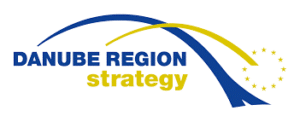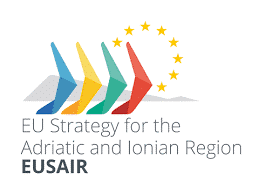EuroAcess Macro-Regions
The database for EU funding opportunities
EuroAccess is a central online information point on EU funding opportunities in the Macro-Regions. It collects and disseminates data of more than 200 EU funding programmes that operate within the geographical scope of the Macro-Regions.
EuroAccess has supported project ideas in the Danube Region since 2016. Due to the success of the pilot initiative, it has now expanded to all four EU Macro-Regions:
| EU Strategy for the Baltic Sea Region | EU Strategy for the Danube Region | EU Strategy for the Alpine Region | EU Strategy for the Adriatic Ionian Region |
 |
 |
 |
 |
| EU Strategy for the Baltic Sea Region |
 |
| EU Strategy for the Danube Region |
 |
| EU Strategy for the Alpine Region |
 |
| EU Strategy for the Adriatic Ionian Region |
 |
EuroAcess Macro-Regions has been initiated by EUSDR Priority Area 10 (Institutional Capacity & Cooperation).
***
Danube Strategy Point and EuroAccess organized two webinars on 12th & 20th January 2021, aiming at presenting the EuroAccess (Online information and search tool on EU-funding available in four EU Macro-Regions) tool for the use of EUSDR’s implementers/ stakeholders.
EuroAccess can support and facilitate mobilisation of funds for a better embedding process. It is a free online information and search tool to support the optimal use of existing funding opportunities to improve economic, social and territorial cohesion in the European Union Macro-Regions.
The agenda focused on two main topics: EuroAccess MacroRegions in the context of the EU Strategy for the Danube Region and the EUSDR Embedding process and The EuroAccess MacroRegions Database.
The platform provides information on programmes and on ongoing calls related to these programmes, available for all four Macro-Regions and beyond, therefore all interested people were invited to join the webinars. For those people who could not participate in the webinars, a presentation is available here.
European Structural and Investment funds (ESIF)
Five main funds (ERDF, CF, ESF, EAFRD, EMFF) work together to support economic development across all EU countries, in line with the objectives of the Europe 2020 strategy.
- ERDF focuses its investments on several key priority areas: innovation and research; the digital agenda; support for small and medium-sized enterprises (SMEs); the low-carbon economy. This is known as “thematic concentration”.
http://ec.europa.eu/regional_policy/en/funding/erdf/
- CF is aimed at Member States whose GNI per capita is less than 90% of EU average. It aims to reduce economic and social disparities and to promote sustainable development. For 2014-2020 period, the CF concerns Bulgaria, Croatia, Cyprus, the Czech Republic, Estonia, Greece, Hungary, Latvia, Lithuania, Malta, Poland, Portugal, Romania, Slovakia and Slovenia.
http://ec.europa.eu/regional_policy/en/funding/cohesion-fund/
- ESF invests in people, with a focus on improving employment and education opportunities across the European Union. It also aims to improve the situation of the most vulnerable people at risk of poverty. The ESF investments cover all EU regions. For the 2014-2020 period, the ESF will focus on four of the cohesion policy’s thematic objectives: promoting employment and supporting labour mobility; promoting social inclusion and combating poverty; investing in education, skills and lifelong learning; enhancing institutional capacity and an efficient public administration.
https://european-social-fund-plus.ec.europa.eu/en
- EAFRD is the EU instrument for funding the EU’s rural development policy, which helps the rural areas of the EU to meet the wide range of challenges and opportunities that face them in the 21st century – economic, environmental and social. Member States build their programs based on at least 4 of the 6 common EU priorities: fostering knowledge transfer and innovation in agriculture, forestry and rural areas; enhancing the viability / competitiveness of all types of agriculture, and promoting innovative farm technologies and sustainable forest management; promoting food chain organisation, animal welfare and risk management in agriculture; restoring, preserving and enhancing ecosystems related to agriculture and forestry; promoting resource efficiency and supporting the shift toward a low-carbon and climate-resilient economy in the agriculture, food and forestry sectors; promoting social inclusion, poverty reduction and economic development in rural areas.
http://ec.europa.eu/agriculture/rural-development-2014-2020/index_en.htm
- EMFF is the EU instrument for funding the Common Fisheries Policy, which is a set of rules for managing European fishing fleets and for conserving fish stocks. Designed to manage a common resource, Common Fisheries Policy gives all European fishing fleets equal access to EU waters and fishing grounds and allows fishermen to compete fairly. EMFF is largely managed by the EU Member States. The fund is used for: Reducing impact of fishing on the marine environment, more market tools for professionals and consumers; joint stewardship of protected areas and Natura 2000 sites; special support to small-scale fishermen.
- http://ec.europa.eu/fisheries/cfp/emff/index_en.htm
European Territorial Cooperation (ETC)
ETC, better known as Interreg, is one of the two goals of cohesion policy. It provides a framework for the implementation of joint actions and policy exchanges between national, regional and local actors from different Member States. It aims at helping to ensure that borders are not barriers, bringing Europeans closer together, helping to solve common problems, facilitating the sharing of ideas and assets, and encouraging strategic work towards common goals. All this demonstrates its clear European added value. Interreg is built around three strands of cooperation: cross-border (Interreg A), transnational (Interreg B) and interregional (Interreg C).
https://ec.europa.eu/regional_policy/policy/cooperation/european-territorial_en
Horizon2020
The EU’s nearly € 80 billion Research and Innovation (R&I) programme for 2014-20supports the implementation of the Innovation Union, a EUROPE 2020 flagship initiative aimed at securing Europe’s global competitiveness. This R&I Framework Programme focuses on industrial leadership and tackling major societal challenges, maximising the competitiveness impact of research and innovation and raising and spreading levels of excellence in R&I.
For funding opportunities under Horizon 2020, please consult:
https://research-and-innovation.ec.europa.eu/funding/funding-opportunities/funding-programmes-and-open-calls/horizon-2020_en
Programme for the Competitiveness of Enterprises and SMEs (COSME)
With a budget of EUR 2.3 billion for the period 2014-2020, COSME will focus its financing on projects strengthening the competitiveness and sustainability of the Union’s enterprises, particularly SMEs. The Programme aims to reduce the administrative and regulatory burden on SMEs by creating a business-friendly environment. It also supports businesses to be competitive by encouraging them to adopt new business models and innovative practices. This complements actions in areas with high growth potential, such as the tourism sector.
For funding opportunities under COSME, please consult:
EU Programme for education, youth and sport (Erasmus+)
The EU’s nearly € 14.5 billion programme for education, training, youth and sport for the period 2014-2017 aims to boost skills and employability, as well as modernize and foster cooperation across all the concerned sectors. It supports transnational partnerships among Education, Training, and Youth institutions and organizations to bridge the worlds of Education and work in order to tackle the skills gaps we are facing in Europe.
For funding opportunities under Erasmus+ please consult the Programme Guide:
http://ec.europa.eu/programmes/erasmus-plus/documents/erasmus-plus-programme-guide_en.pdf
See also: Erasmus+ Official Website:
EU Programme for Culture & Audio-visual – Creative Europe
With a budget of €1.46 billion for the period 2014-2017, the Programme aims to foster European cultural and linguistic diversity and promote European heritage. It supports artists and cultural professionals in developing their skills, competencies, and know-how, as well as working across borders and creating transnational cultural activities within and outside the EU. The programme consists of two sub-programmes: the Culture sub-programme, which promotes the culture sector, and the MEDIA sub-programme, which supports the audio-visual industry.
For funding opportunities under Creative Europe, please consult:
https://culture.ec.europa.eu/creative-europe
Connecting Europe Facility (CEF)
With a budget of € 33.2 billion for the period 2014-2020 the new EU instrument for targeted infrastructure investment at European level aims to better connect and integrate the Union and all its regions, in the transport, telecommunications and energy sectors. By focussing on smart, sustainable and fully interconnected transport, energy and digital networks, the CEF will help to promote growth, jobs and competitiveness.The CEF Programme is divided into three sectors:
For funding opportunities under CEF please consult: https://ec.europa.eu/inea/en/connecting-europe-facility
European Fund for Strategic Investments (EFSI): Investment Plan for Europe
The EFSI aims to overcome the current investment gap in the European Union (EU) by mobilising private financing for strategic investments which the market cannot finance alone. With a budget of € 315 billion for the period 2015-2017, the fund will focus its financing on investments in infrastructure and innovation, as well as risk finance for Small-and Medium- sized Enterprises (SMEs).
If you are looking for finance please consult: http://www.eif.org/what_we_do/efsi/index.htm
The Marguerite Fund – 2020 European Fund for Energy, Climate Change and Infrastructure
Marguerite is an independent European fund investing in infrastructure i.e. greenfield: new projects and facilities, with typical development risks largely mitigated and brownfield: replacement, modernisation and capacity enhancement of existing assets. Established with the backing of six major European financial institutions (namely the EIB, Caisse des Dépôts et Consignations, Cassa Depositi e Prestiti, Instituto de Crédito Oficial, PKO Bank Polski SA, KfW), Marguerite targets long term institutional investors to finance projects aimed at achieving major objectives and strategic projects of the European Union in the areas of transport, energy and climate, as well as energy renewable. For funding opportunities under Marguerite please consult: http://www.marguerite.com/
LIFE PROGRAMME
The EU’s €3.4 billion funding programme for the environment and climate action for the period 2014-2020 contributes to sustainable development and to the achievement of the objectives and targets of the Europe 2020 Strategy, the 7th Union Environmental Action Programme and other relevant EU environment and climate strategies and plans by co-financing projects with European added value. The European Commission (DG Environment and DG Climate Action) manages the LIFE programme. The Commission has delegated the implementation of many components of the LIFE programme to the Executive Agency for Small and Medium-sized Enterprises (EASME). External selection, monitoring and communication teams provide assistance to the Commission and EASME. The European Investment Bank manages the two new financial instruments: Natural Capital Financing Facility (NCFF) and the Private Finance for Energy Efficiency instruments (PF4EE).
For funding opportunities under LIFE please consult:
http://ec.europa.eu/environment/life/funding/financial_instruments/index.htm
Instrument for Pre-Accession Assistance (IPA)
From January 2007 onwards, IPA replaces a series of EU programmes and financial instruments (PHARE, PHARE CBC, ISPA, SAPARD, CARDS and the financial instrument for Turkey) for candidate countries (Turkey, Albania, Montenegro, Serbia and the former Yugoslav Republic of Macedonia) or potential candidate countries in the Western Balkans (Bosnia-Herzegovina, Kosovo under UN Security Council Resolution 1244/99). IPA is made up of five different components: assistance for transition and institution building; cross-border cooperation (with EU Member States and other countries eligible for IPA); regional development (transport, environment, regional and economic development); human resources (strengthening human capital and combating exclusion); rural development.
https://enlargement.ec.europa.eu/enlargement-policy/overview-instrument-pre-accession-assistance_en


